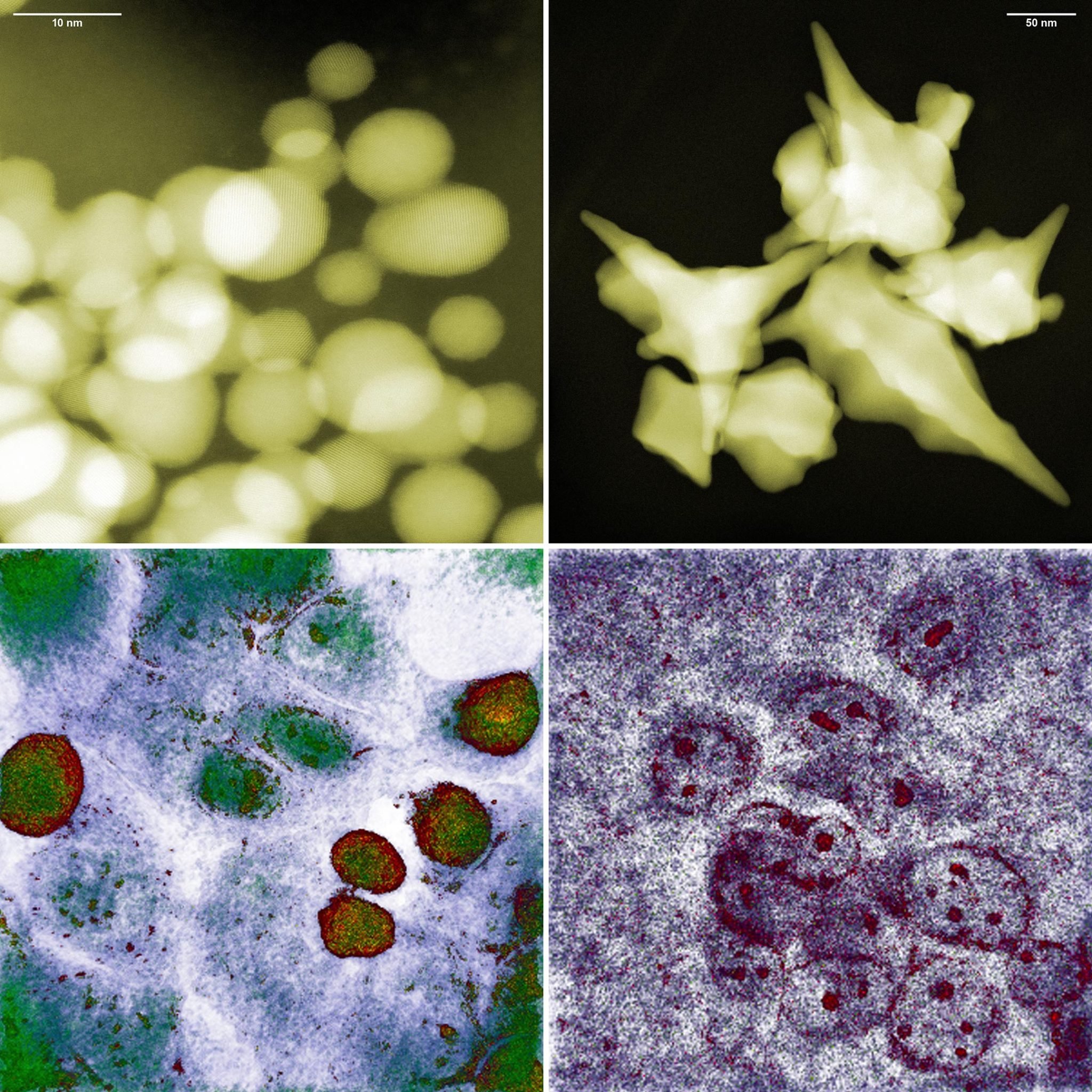Follow us on Google News (click on ☆)

Spherical and star-shaped gold nanoparticles (top) and colon cancer cells after about five hours of exposure (bottom).
Credit: IFJ PAN
For a long time, it was believed that small nanoparticles, due to their ability to easily penetrate cells, were the most effective at inducing cell death. However, Polish researchers employed an innovative microscopic technique to discover that the shape and size of nanoparticles play a far more complex role than previously thought.
The team from the Institute of Nuclear Physics of the Polish Academy of Sciences (IFJ PAN) synthesized various gold nanoparticles and found that glioma cancer cells resisted small spherical nanoparticles of 10 nanometers, while 200-nanometer star-shaped ones induced high cell mortality. This difference in effectiveness is explained by the spikes of the star-shaped nanoparticles that damage cell membranes, generating oxidative stress that is fatal to cancer cells.
The crux of this discovery lies in the use of a holotomographic microscope, a device that enables three-dimensional observation of living cells with nanometric resolution. This technology allowed for real-time tracking of the interaction between nanoparticles and cancer cells without disrupting their metabolism, uncovering why star-shaped forms are more destructive.
A theoretical model was then developed to predict the penetration of nanoparticles into cancer cells. This model significantly simplifies the research phase by reducing the number of necessary experiments and enabling the design of more targeted therapies, thereby increasing treatment effectiveness while minimizing side effects on healthy cells.
The Polish researchers continue their work to expand their model to other types of tumors and nanoparticles, aiming to optimize photo- or protonic therapies. This advancement could very well redefine the future of cancer treatments.